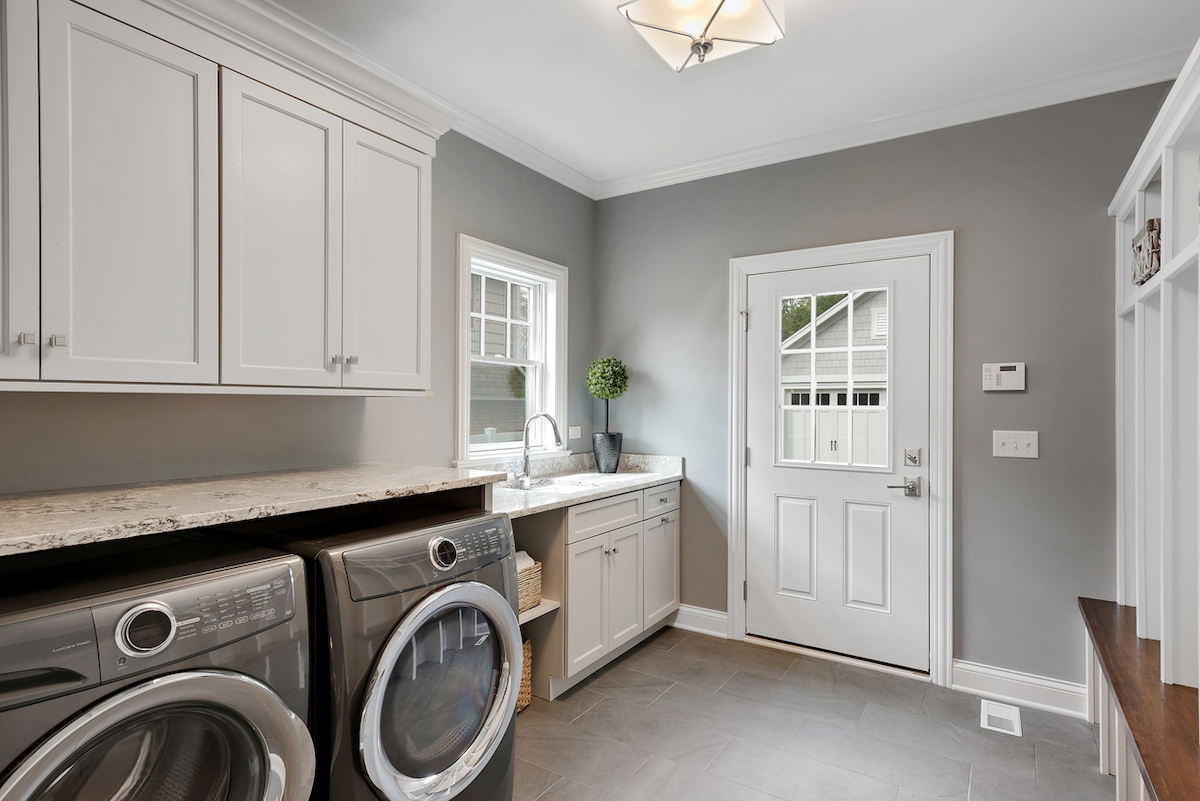

We may earn revenue from the products available on this page and participate in affiliate programs. Learn More ›
Home Advice You Can Trust
Tips, tricks & ideas for a better home and yard, delivered to your inbox daily.
By signing up you agree to our Terms of Service and Privacy Policy.
Laundry is a necessary, and seemingly never-ending, fact of life. But does it require its own room? Why not place your washer and dryer in a location that makes more sense for your lifestyle, or lets you double up on household duties or squeeze in some recreation between loads?
In the dual-use laundry spaces that follow, some keep the washer and dryer on full display, but most are designed to hide the appliances from sight when they are not in use. With smart use of existing or new doors, room dividers, or built-in cabinets, it’s easy to conceal a laundry center. Who knows? Once you’ve created one of these flexible laundry spaces, you might even start looking forward to folding towels.
Hall or Spare Closet
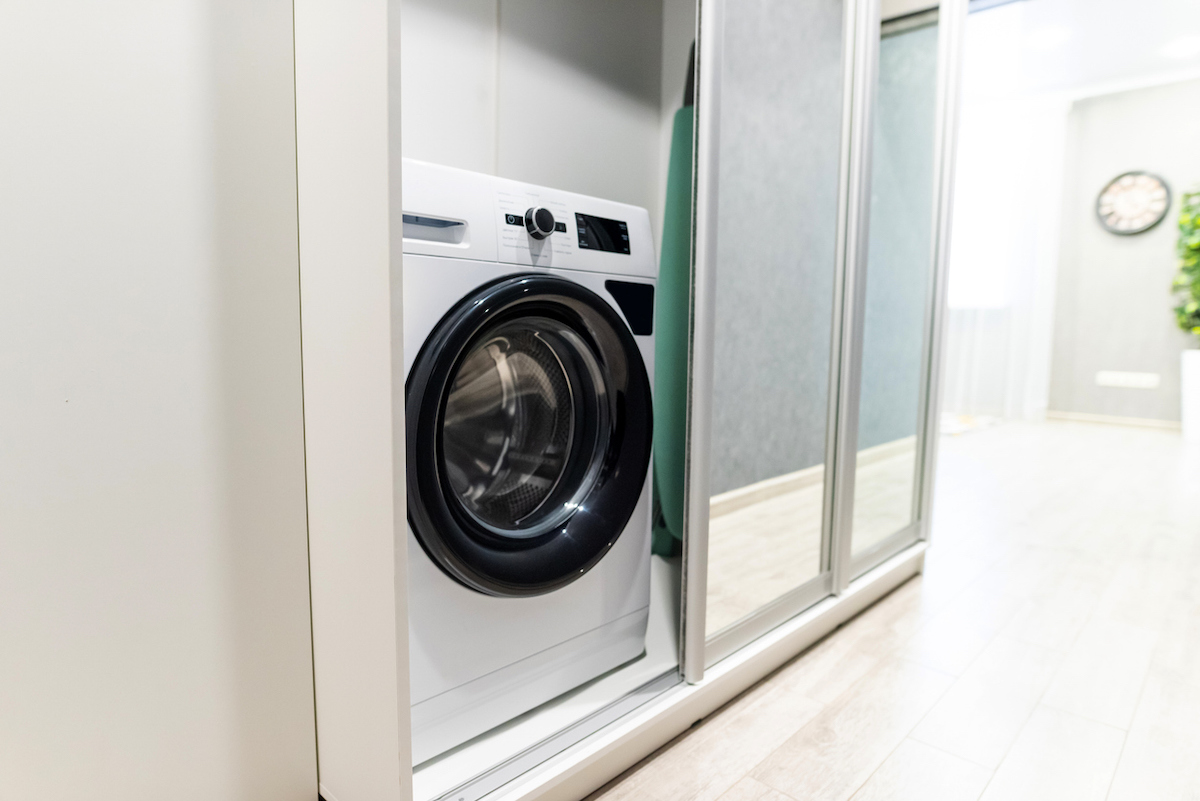
Photo: istockphoto.com
Do you have an extra closet? It might be great for storing clothes, but you can put it to work cleaning and drying them instead, and all behind closed doors. Stowing the washer and dryer in a closet is an easy way to keep these taskmasters handy but tidily concealed, and it lets you free up an existing laundry room for another purpose entirely.
Where to put it: Convert a long, narrow hall closet into a laundry space or place stackables in a roomy closet in a spare room, retaining some hanging space for clothing (including items right out of the dryer). Organizers inside the closet door can help store bottles, brushes, and stain remover.
Pantry
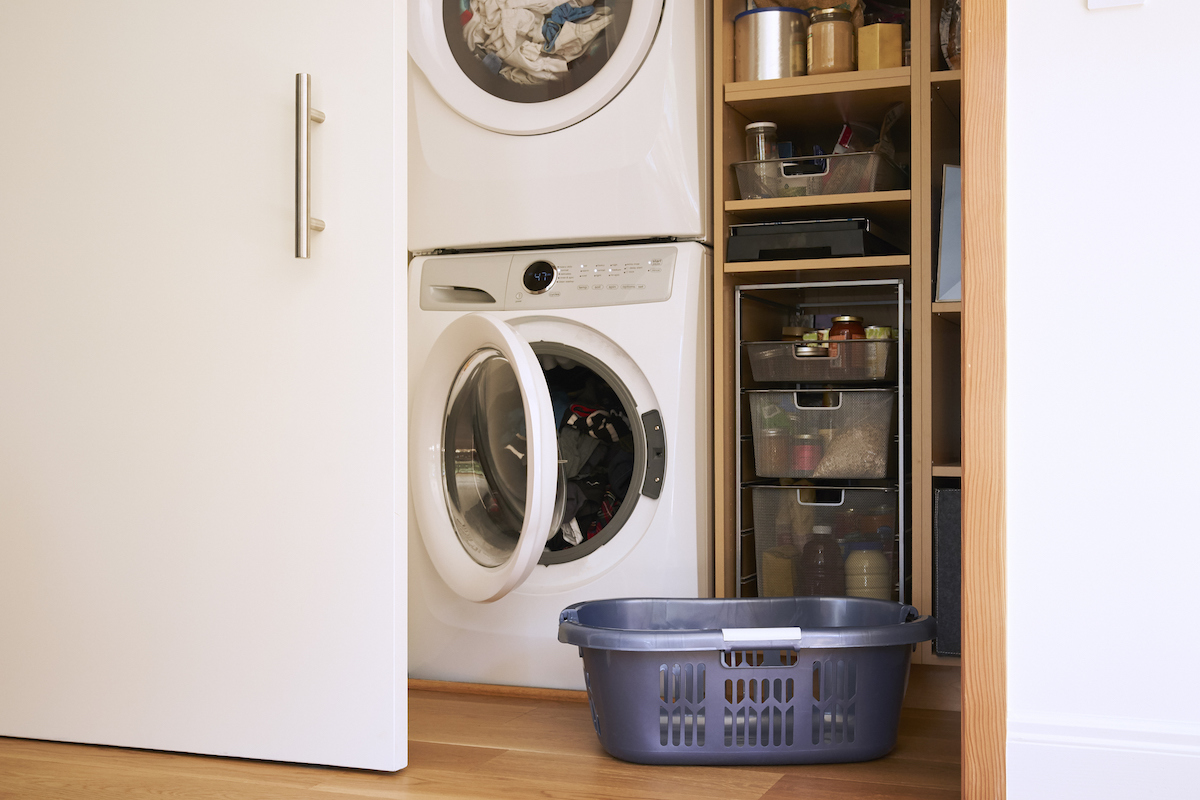
Photo: Getty Images
Pantries are common features in older homes, but today many homeowners find that they don’t require so much space to store food, or prefer to use upper cabinets for that purpose. A spacious, lightly used pantry can fit a washer and dryer, particularly the stackable kind. Having these appliances in the kitchen can be exceptionally convenient, especially when you’re trying to cook dinner as you wrap up laundry day.
Where to put it: For a walk-in pantry, opt for replacing just enough lower cabinets to accommodate the appliances. If possible, add or replace a countertop above the washer and dryer for soap storage and folding space.
Hidden in the Kitchen
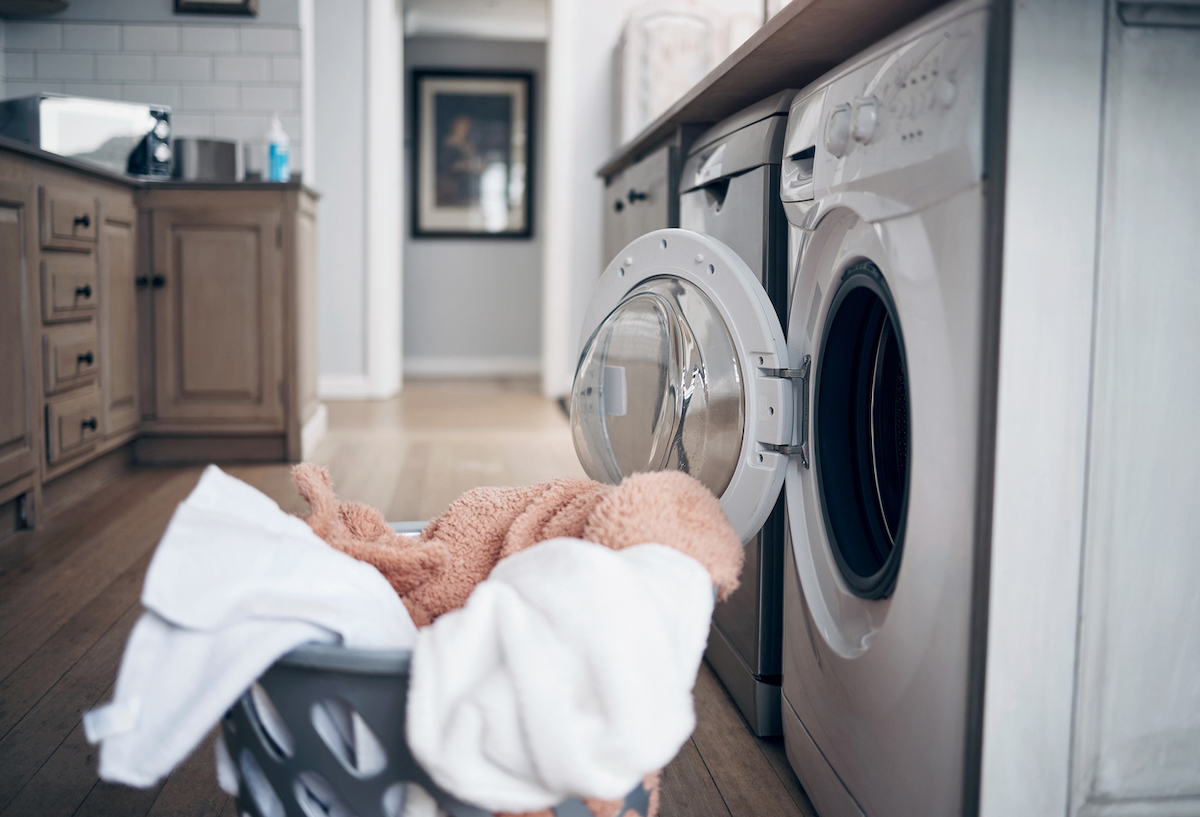
Photo: istockphoto.com
While the kitchen is a logical place for the washer and dryer (it is the epicenter of most homes, after all), you may not want the world to know the appliances are there. Conceal stacked units behind a cabinet or small pantry doors, and then use the former laundry area for storing large items, such as space-hogging countertop appliances. For another kitchen laundry option, place a washer and dryer side by side under a countertop so you can still have a work surface for food prep or folding.
Where to put it: Add appliances under a kitchen peninsula that’s seldom used for seating or that has inconveniently deep storage spaces. Another possibility? Install the appliances along a wall just around the corner from the kitchen.
Basement

Photo: istockphoto.com
It isn’t uncommon for the washer and dryer to be relegated to an unfinished basement, but just because the space is unfinished doesn’t mean you need to dread your time in exile, scrubbing out stains. A few decorative touches can go a long way toward making a cold basement more welcoming. Add a rug and some curtains to help create a fun area that can brighten up the dreary task. If you value function as much as form, add a utility sink while you’re putting in plumbing for the washer.
Where to put it: Choose a spot with plenty of headroom (and with existing or nearby plumbing, if possible). Try to keep the laundry area out of the way, in case your basement serves other functions—or might in the future.
Mudroom
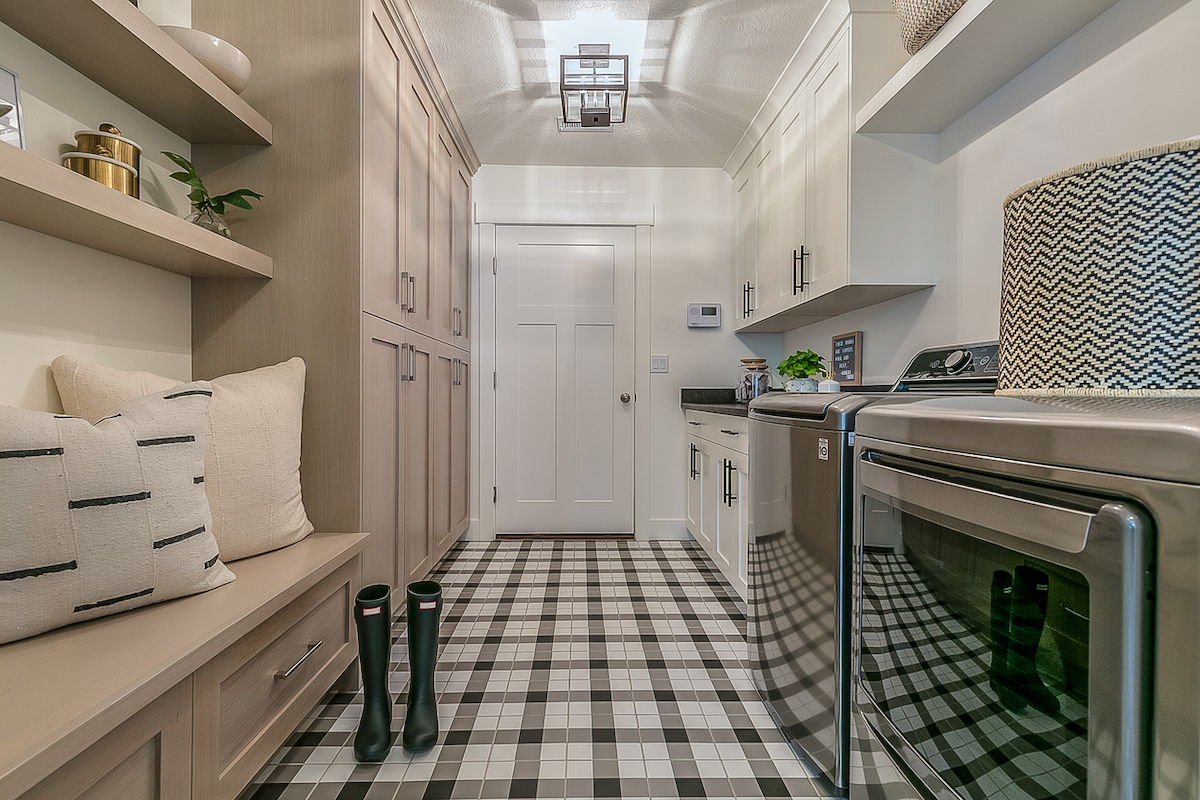
Photo: istockphoto.com
If you put the washing machine in the mudroom, kids can drop off dirty, grass-stained clothes right away instead of tracking a mess through the house. There’s also a good chance that a mudroom will already have a water hookup for a utility sink.
Where to put it: Hiding the washer and dryer shouldn’t matter as much in a mudroom as in would in a living area or kitchen. A simple countertop over the washer and dryer can serve as folding space. If the mudroom is large enough, include hampers (dedicated to specific family members, if possible), along with the expected mudroom amenities, such as hooks, baskets, or lockers to hold shoes, coats, and backpacks.
Bedroom Closet
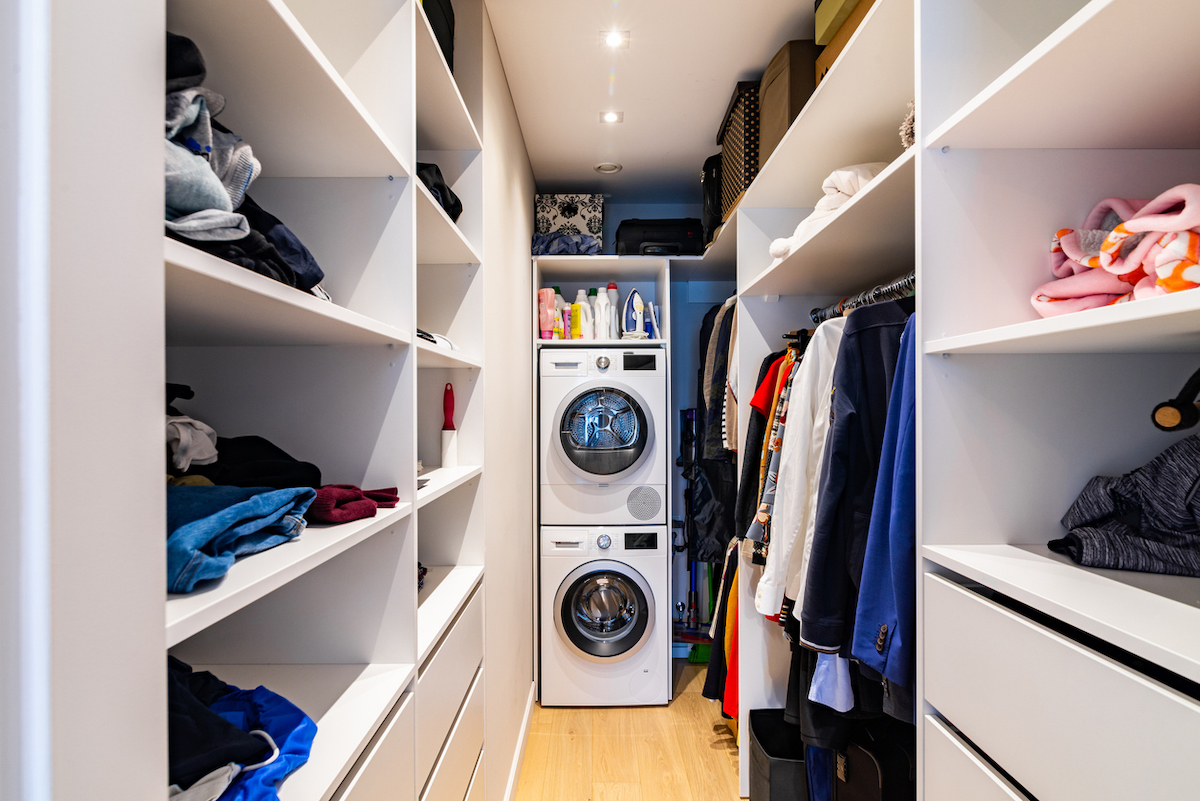
Photo: istockphoto.com
You might find a seldom-used hall closet to turn into a laundry room, but a real clotheshorse might prefer to get the laundry done right where all the action is: inside a spacious walk-in closet or dressing area in a primary suite. You’ll need fewer trips back and forth when it’s time to put clothes away, but you will have to be willing to sacrifice space for your shirts and shoes.
Where to put it: Place a stackable washer and dryer in a corner of the closet, maybe where shelves currently sit. Add organizers on upper shelves or the floor to make up for lost storage.
Office
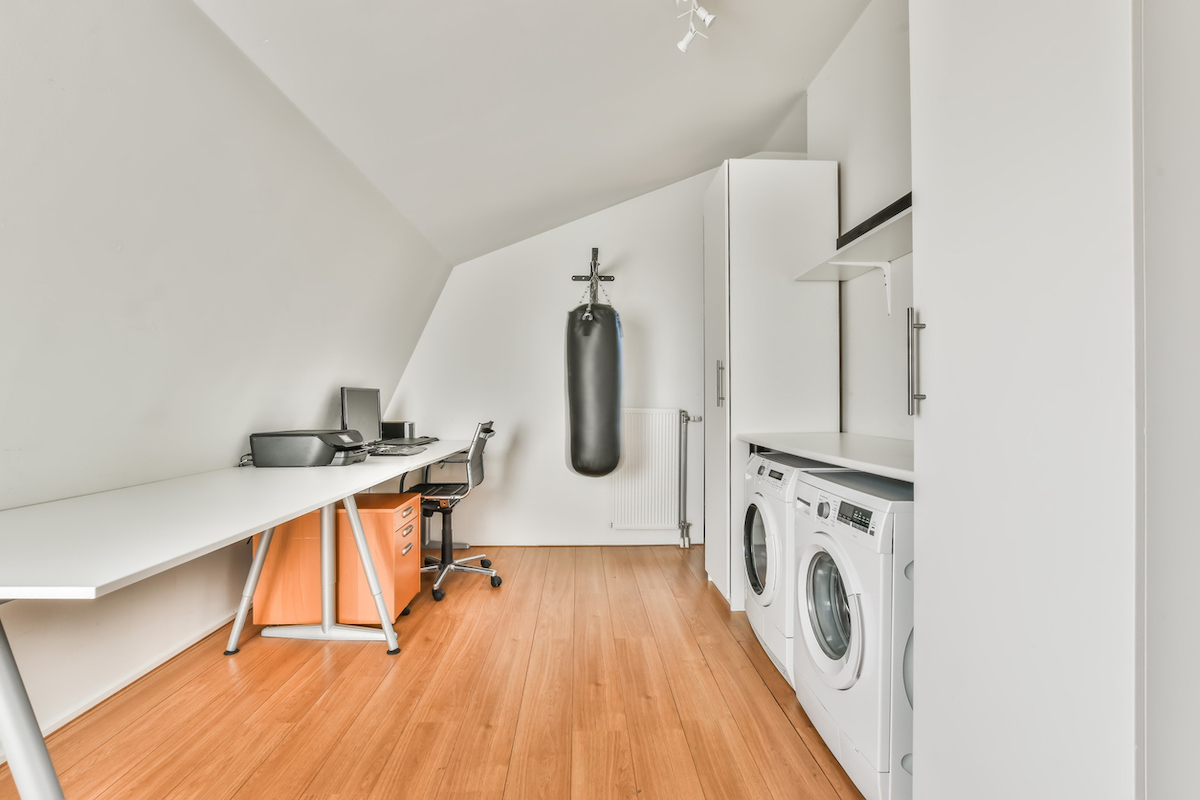
Photo: istockphoto.com
If the quiet hum of a washer or dryer doesn’t distract you, the home office might be an ideal location to do laundry. Home offices often occupy spare bedrooms, which should be plenty large to accommodate laundry appliances and supplies. Of course, you’ll need to be able to tuck the appliances out of sight if colleagues or clients visit your office.
Where to put it: Office closets can offer an inconspicuous spot to add a laundry space. Retain some stacked storage for work and laundry supplies.
Bathroom
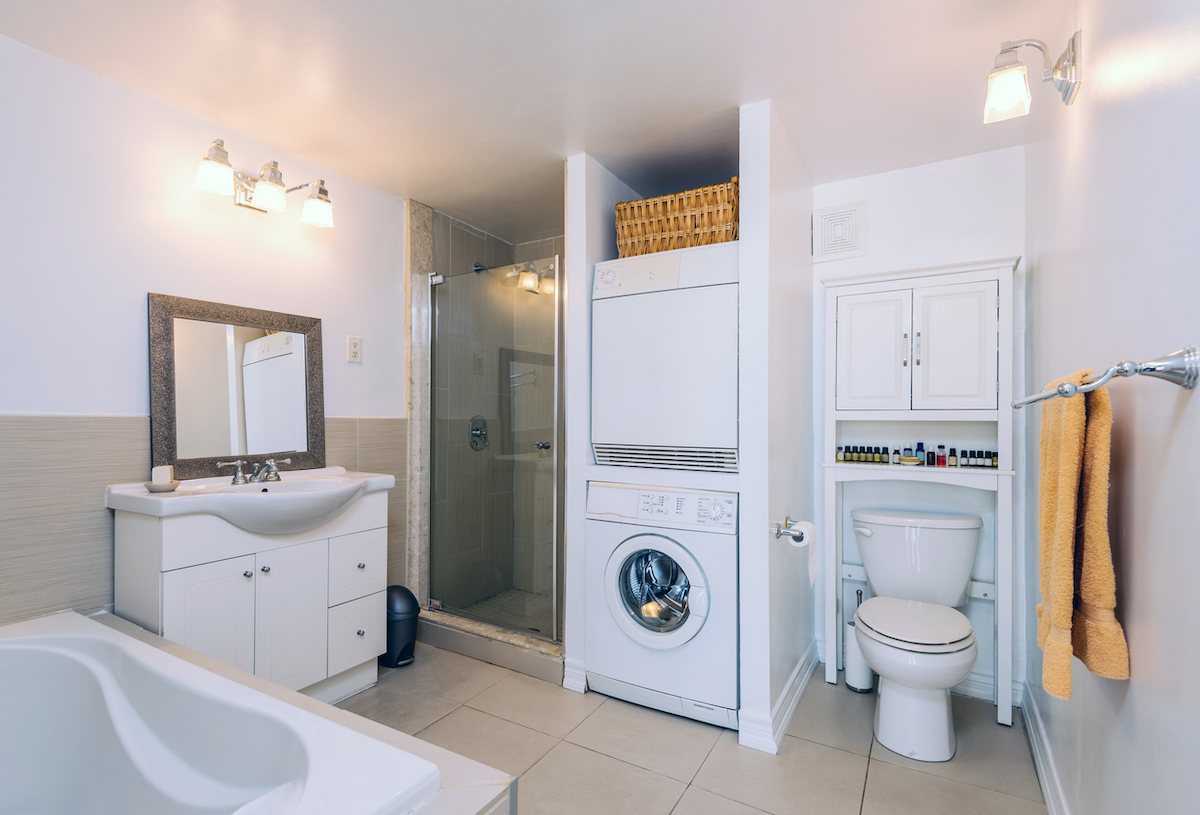
Photo: istockphoto.com
Your family will have no excuse for leaving clothes on the floor post-shower when the washing machine is right in the bathroom. Because plumbing is already in place, the bathroom is a practical site for a washer and dryer, and a great way to stay on top of the laundry situation in your household.
Where to put it: Tuck stackable appliances next to a shower surround or sink. Add a cabinet or pocket door to close it off when not in use, or consider hanging a barn door to section off the two functional spaces.
Tucked Under Stairs
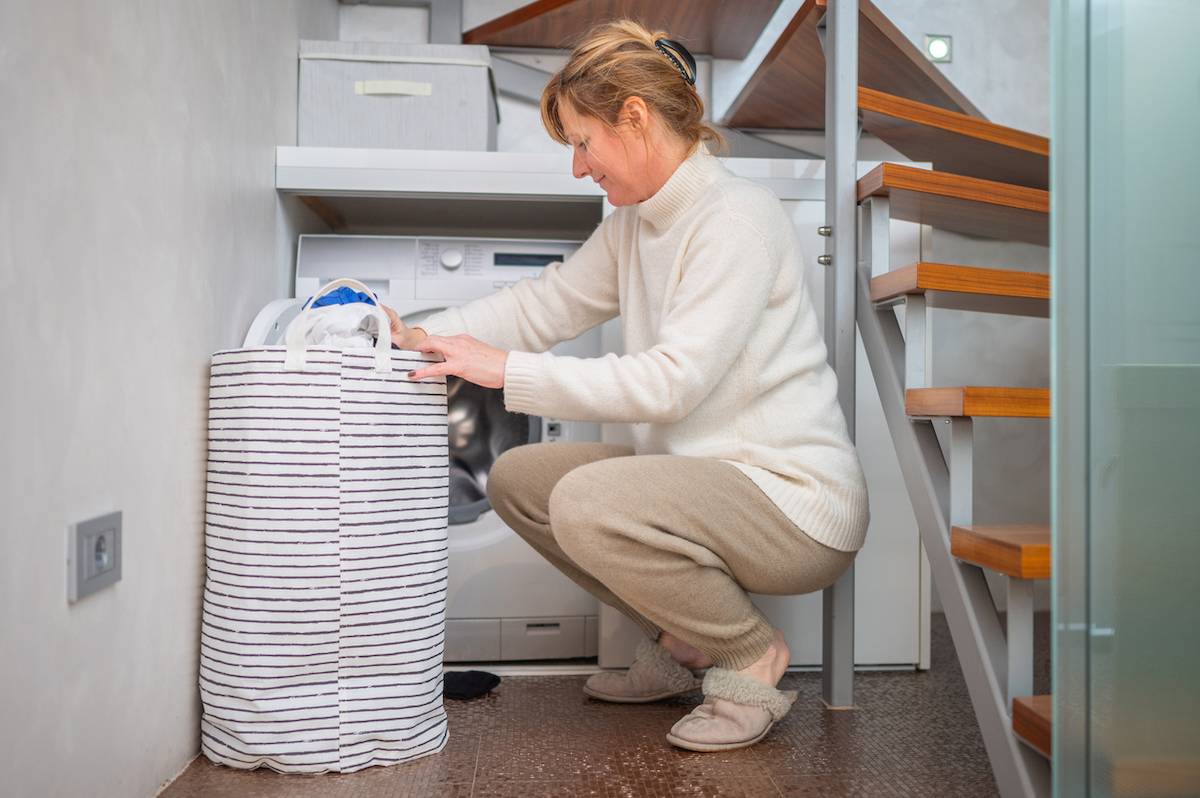
Photo: istockphoto.com
In some homes, the space under the stairs often goes unused. Turn this wasted space into a highly useful one by adding laundry appliances and a little storage, working with the slope of the wall around it. For homes with stairs, another option is to take advantage of an expansive landing area at the top. If the landing offers a blank wall large enough to accommodate appliances, surround them with cabinets that match the decor and let you hide the laundry space when it’s not in use.
Where to put it: A nook under the stairs or a landing at the top of them can both be options for accommodating a hidden laundry room. But first, you’ll need to consider the size of the space, how easy it’ll be to add plumbing and venting, and the disruption from the noise of the appliances.
Garage

Photo: istockphoto.com
If your garage isn’t often used for dirtier and messier pursuits, consider moving the washer and dryer out there. If your laundry center is in the garage, there’s no need to hide it. You will still need to keep the area tidy to make sure your clean clothes stay that way. But with appropriate storage and accessories, you can create an organized spot in the garage and free up functional space in the house.
Where to put it: Many garages have utility space along the wall closest to the house to accommodate appliances like water heaters or extra freezers, saving you from having to squeeze by parked cars while you’re carrying a hamper. If this space is deep enough, you can place appliances side by side or stack them.

This Is the Year for a Kitchen Renovation
Whether you’re selling or staying, everyone can get something out of a kitchen update. Learn why we consider this renovation the Most Valuable Project of 2025 and how to stay on budget.